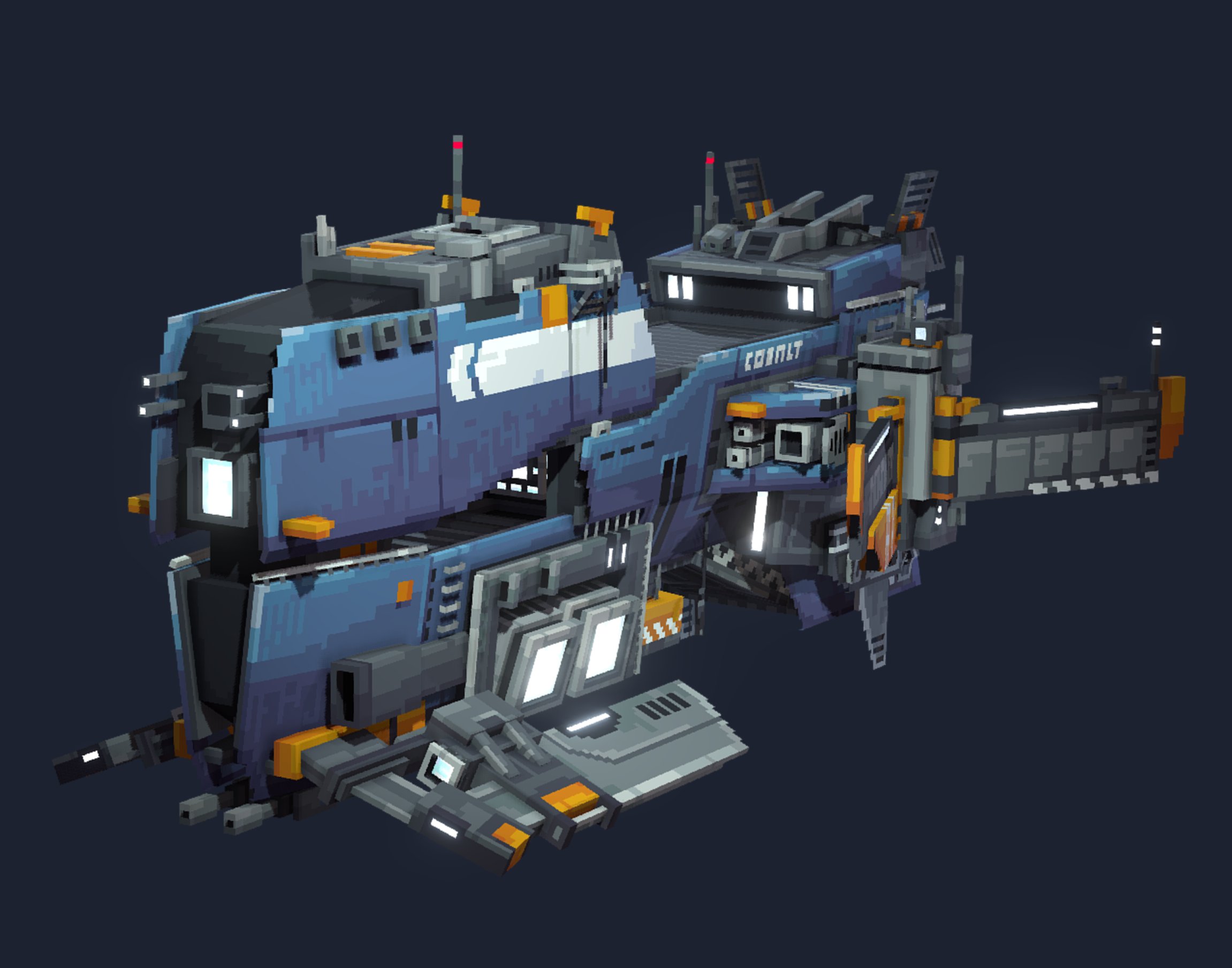

You can also UV map cubes manually, but creating a template does the work for you and finds the most space-efficient layout. The template is a texture that has a unique space for every cube and every face of the model. Once the shape of the model is done, you can create a texture template. You can also use this tool on cubes if you want to rotate those around a specific point. This tool allows you to move the pivot point of the bone. Select a bone and press P to get the Pivot tool. When you're creating bones for moving parts of the model, always think about which point the part should rotate around. You can either mirror them before or after creating the texture depending on whether you want the same texture on both sides. If you're working on symmetrical parts like limbs, create them on the right-hand side first and mirror them to the left later.
#BLOCKBENCH MODELS FULL#
To avoid stretched or invisible faces, make sure the size of cubes sticks to full numbers. That means that the texture mapping will only use full numbers and will round down to a smaller number if necessary. Depending on the modeling style, it can make sense to completely stick to the grid or only move the cubes in half or quarter increments.īedrock Edition models use Box UV mapping by default. You can move cubes more precisely by holding either shift, control, or both at the same time. A trick to add cubes faster is to select an already positioned cube and press Ctrl + D (duplicate) to get a copy. Create new cubes and use the move, resize, and rotation tools to adjust it. You can now start to create the shape of the model. This screenshot shows the correct bone structure of the finished model. You can drag around groups to change the order or drop them into other groups. While we build up the model in the following steps, make sure the structure is set up correctly. Each bone name has to be unique for future reference through animations. The name for a bone should be snake_case (so only including lower case letters, numbers, and underscores). You can right-click the group or press F2 to rename it. “Groups” and “Bones” are essentially the same in this context. This means that you'll later be able to animate the entire model at once, as well as specific parts of it. Each bone itself is invisible but can contain cubes that will shape the model.Ī good practice is to use a root bone for each model and put everything else inside it. Bones are the part of the model that can be animated, and they can be arranged in an arbitrarily deep hierarchy. The first thing to consider when making a model is the bone structure.

The confirm button will save these settings. The Box UV setting and the texture size can also be left at default because we'll change them later. We can leave the field for the file name empty for now as we'll later define it when we export the model. Spaces and other special characters aren't supported. The best practice is to use snake_case - so only lower case letters, numbers and underscores as well as dots. Here, we'll enter a unique name for the model. You'll see a dialog about the basic settings for the project. When you first open Blockbench, you'll see a list of available model formats. To create the model and texture, we're going to use Blockbench, a 3D modeling program that can create models for the Bedrock Edition of Minecraft. Each model uses a texture that can be assigned through render controllers. Models in Minecraft use a specific format that uses JSON to define the shape. It’s recommended that the following be completed before beginning this tutorial.
#BLOCKBENCH MODELS HOW TO#
How to apply textures and animations to a model.How to create a model for an entity using Blockbench.In this tutorial you will learn the following: As an example, we'll model and animate a small robot, which was started in the Introduction to Add Entity article. In this guide, we'll go through the basics of creating a model and creating animations for Minecraft: Bedrock Edition.

#BLOCKBENCH MODELS SERIES#
This article is part of the Minecraft Entity Introduction tutorial series from the Minecraft Creator Portal and can also be found on Microsoft Docs.


 0 kommentar(er)
0 kommentar(er)
